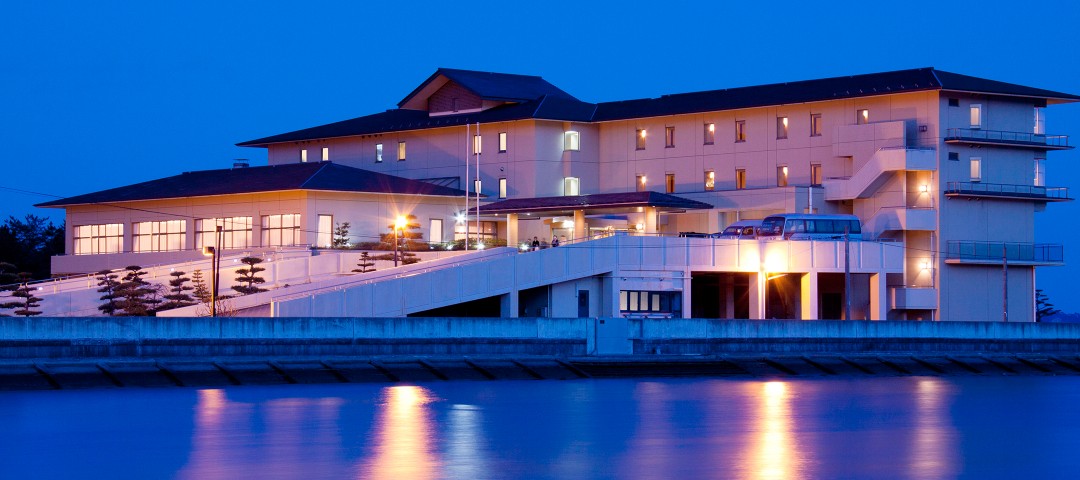
Matsushima, most celebrated scenic sight in Japan
Matsushima (松島), One of Japan’s most celebrated scenic sights

Matsushima has been known as a scenic area in the Tohoku region since ancient times. Mutsu Kokufu (The ancient executive branch of the Tohoku region) was established in AD 724 in the adjoining Tagajo city (多賀城市). Nobles dispatched by the central government took home with them stories of the beauty of this region when they returned to the capital. Since the days of the dynasty, people longed for the land of Michinoku (the ancient name of the Tohoku region), and composed many waka poems (Japanese classical style short poems) about Matsushima.
In his book, Noin (能因法師, 988-1058?) elaborated about waka poems, "Matsushima", "Ojima" and "Magaki no shima", using classical Japanese verse. In Hyakunin-isshu (百人一首, the most famous waka poem anthology compiled in the Kamakura period), 3 poems were selected with subjects focused on Matsushima. There are a number of famous authors and poets who wrote of Matsushima, like Minamoto no Toru (源融, 822-895), Minamoto no Shigeyuki (源重之, ?-1000), Saigyo (西行, 1118-1190). The first lord of the Sendai domain, Date Masamune (伊達政宗 , 1567-1636) also loved Matsushima and wrote poems about its beauty.
One world-famous poet who visited Matsushima is Matsuo Basho (1644-1694), known as the greatest haiku poet in history. In his book, "The Narrow Road to the Deep North" (おくのほそ道), Basho noted in the beginning of his journey to the Tohoku religion, "The beautiful moon of Matsushima impresses on the mind more than anything". In おくのほそ道, he praised the beauty of Matsushima as "The top among Japan’s landscapes, and even rivals the scenic spots in China." From the landscape of Matsushima and the taste of the rocky shore of Ojima, Basho was overwhelmed and was unable to write haiku, and even couldn't sleep due to excitement.
On December 3, 1922, Albert Einstein visited Matsushima for the purpose of viewing the moon. It has been said that he became speechless upon seeing the beauty of the waxing moon, and after regaining his composure he told his companions, "No master craftsman could craft such beauty."
Famous historical buildings like the Zuigan-ji temple (瑞巌寺), the Entsu-in temple (円通院) and the Kanran-tei (観瀾亭, tea ceremony pavillion) will allow you to feel the solemn atmosphere of ancient Japan.
Through the long history of Japan, the beauty of Matsushima had been longed for and loved. You can enjoy the landscape and relax in our special seats. We have prepared the seats here at Palace Matsushima (パレス松洲).
- Miyagi Touring Navigation (Miyagi prefectural government)
- Matsushima Tourism Association (English, 汉语, 한국어)
- Facebook Page "Visit Matsushima" (informations about special events and seasonal activities in Matsushima)
- Matsushima in Wikipedia
- Matsushima in Wikitravel
- World's Most Beautiful Bays Club - Matsushima
Miyagi prefectural government "Matsushima Bay Journey Through 1,000 Years of History"
After The Great East Japan Earthquake and Tsunami
March 11, 2011, an earthquake and tsunami of unprecedented magnitude struck the Pacific Ocean coast of eastern Japan. More than 10,000 people were missing or died in Miyagi Prefecture. In the Matsushima area, the islands floating in the bay helped to dissipate the energy of the tsunami and the damage was relatively small. Of course, the area received a fair bit of damage but our historical landscape protected the area, and we could start on the road to recovery from a fairly early stage.
We are ready to welcome customers. More than anything else we take joy in offering our hospitality to travelers and engaging in tourism in these affected areas.
There has been no change to the beauty of Matsushima. The landscape that has been loved by the Japanese people for more than 1,000 years can now also touch and heal people. We are always welcome to tourists from all over the world wishing to visit this land and enjoy its beauty.
About パレス松洲 (Palace Matsushima)
Palace Matsushima is a small public accommodation nestled on the shores of Matsushima, which offers affordable rates.
Not overly luxurious, our customers can enjoy an unobstructed view of Matsushima through the windows of all the rooms.
Rooms
We Provide 5 room types to meet the needs of all our customers.
Premier Japanese-style Room

- Capacity: 2 to 6 people
- A twelve-and-half tatami mat Japanese style room with a wide veranda and a bed room with two double beds
- A bathroom with a bathtub and a shower, and a toilet equipped with a washlet.
- Digital TV (37-inch screen)
Premier Suite Room

- Capacity: 1 to 2 people
- A bed room with two double beds and a living area
- A bathroom with a bathtub and a shower, and a toilet equipped with a washlet
- Digital TV (50-inch screen)
Japanese-style Suite Room

- Capacity: 2 to 7 people
- An eight tatami mat Japanese style room with a wide veranda and a seven and a half mat Japanese style room
- A bathroom with a bathtub and a shower, and a toilet equipped with a washlet























